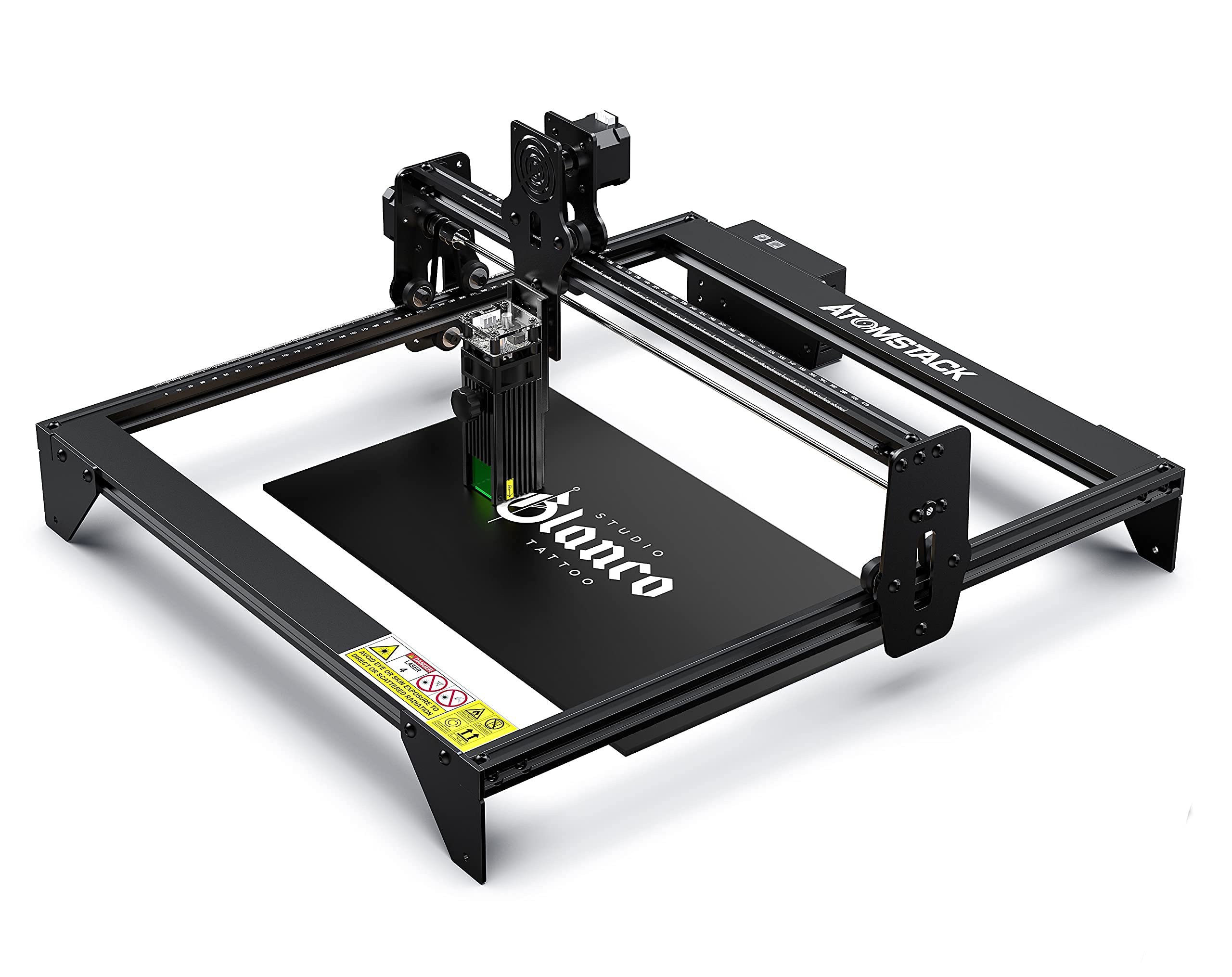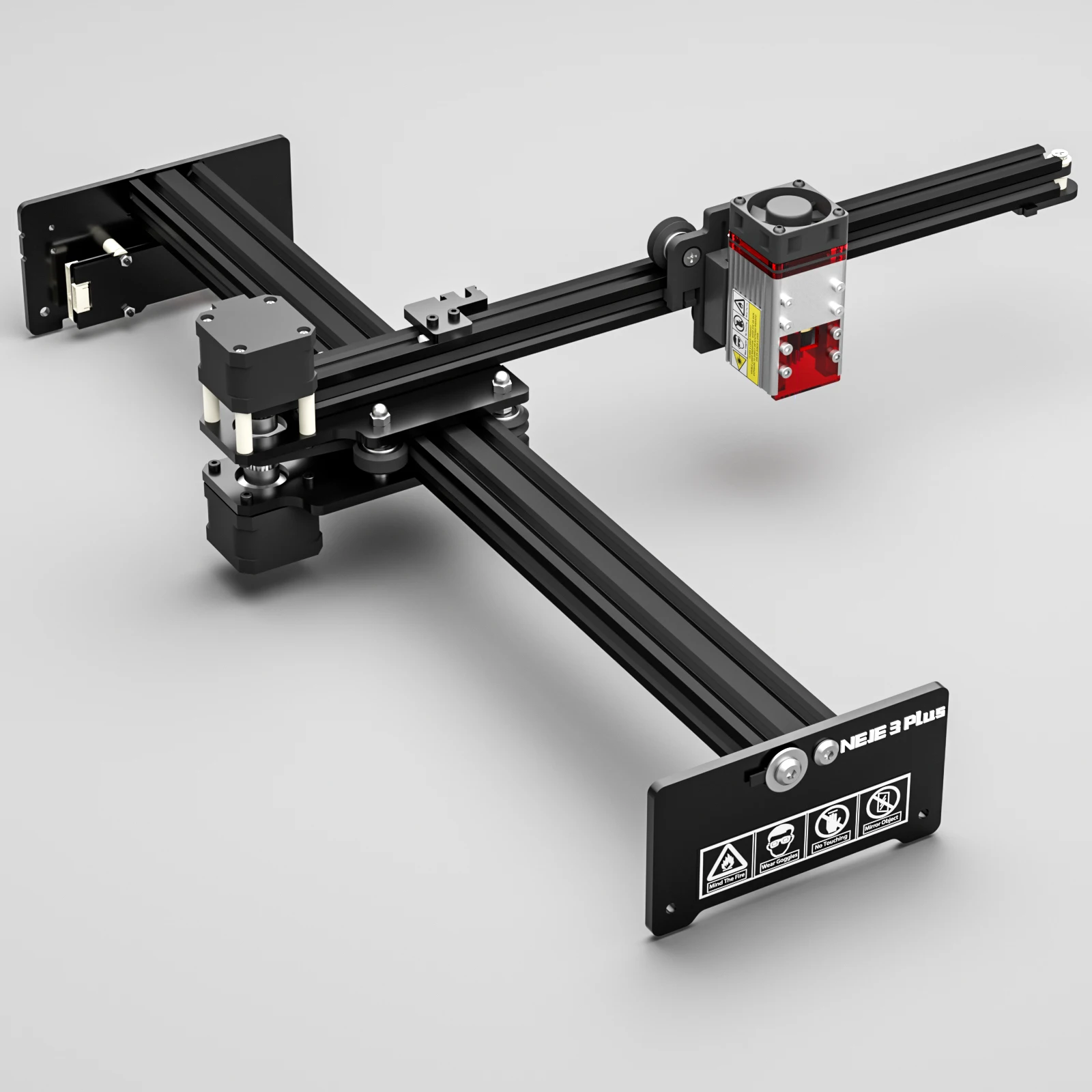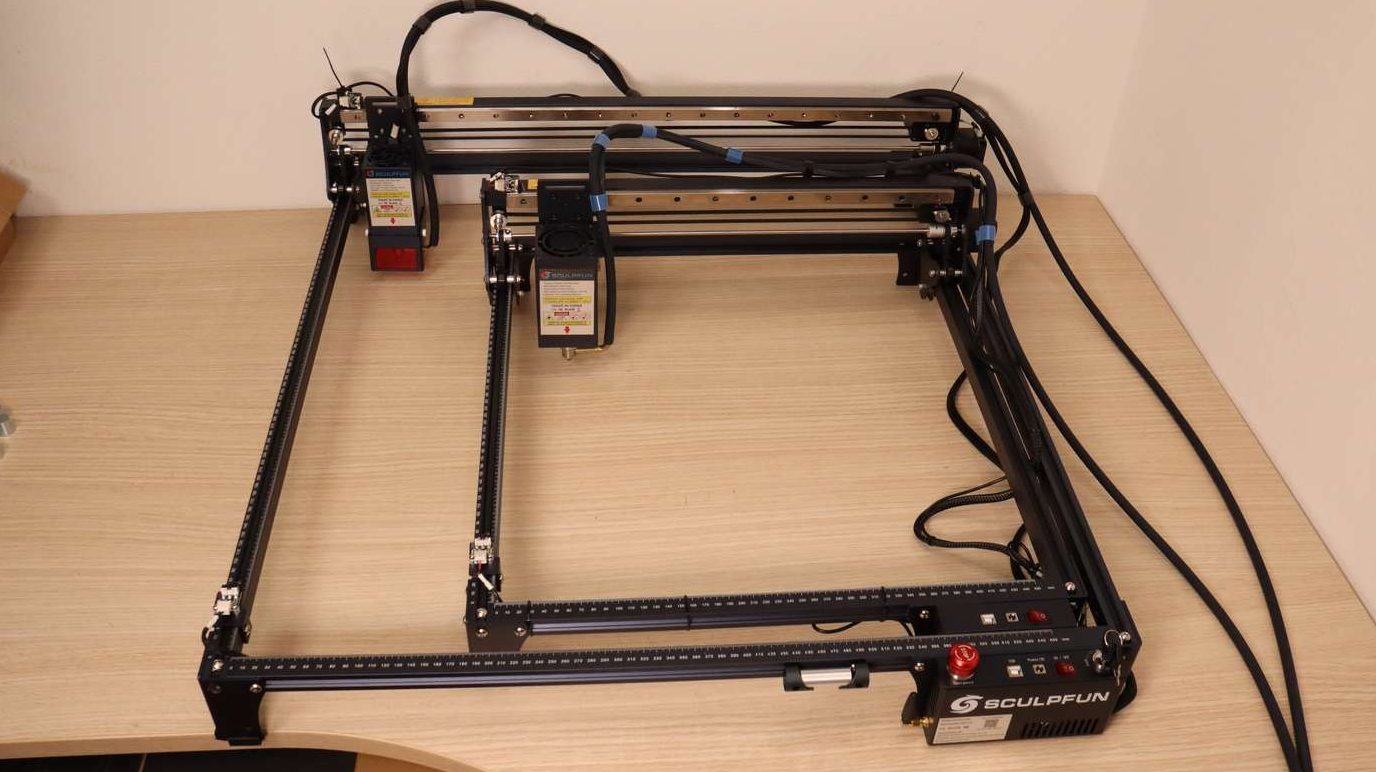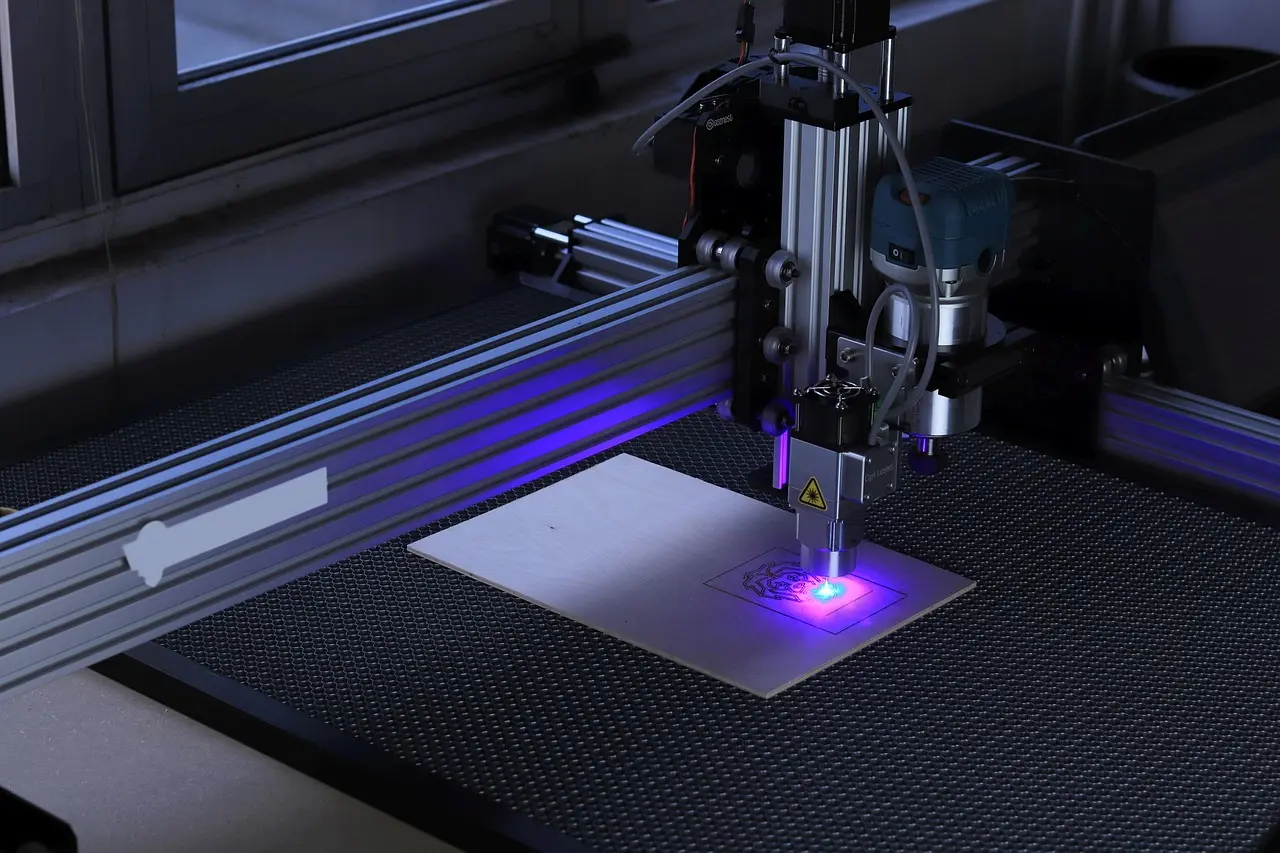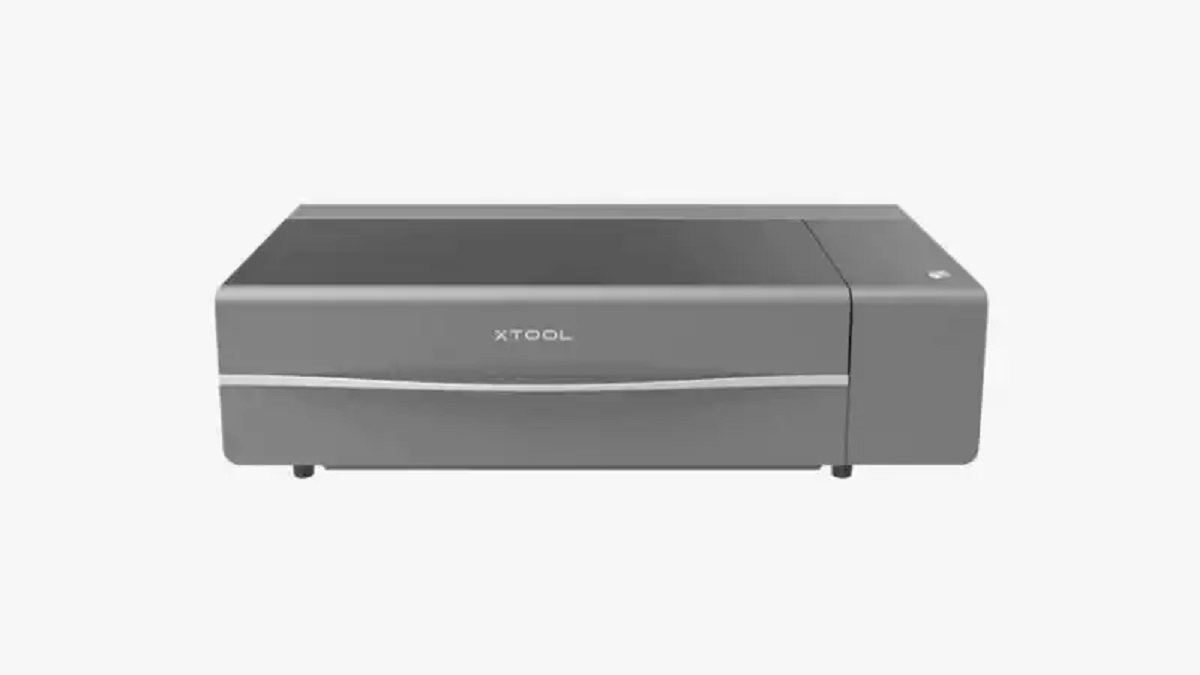Introduction
The popularity of laser engraving has surged in recent years, as more and more people are discovering the versatility and precision that this technology offers. Laser engravers are widely used for various applications, ranging from marking and engraving on materials like wood, metal, and glass to creating intricate designs on jewelry and personalized gifts. However, with the convenience and benefits of laser engraving, it is essential to be aware of the potential dangers it poses, particularly to the eyes.
Laser engravers utilize concentrated beams of light to etch or cut through materials with remarkable precision. While these intense beams are crucial for achieving the desired results, they can also pose significant risks if proper safety precautions are not followed. The eyes, being one of the most sensitive organs in our bodies, are particularly vulnerable to damage from laser exposure.
This article aims to delve into the potential dangers that laser engravers pose to the eyes and provide valuable insights into the necessary precautions to mitigate these risks. It will explore the various types of laser engravers, the hazards of direct exposure to laser beams, the potential eye injuries that can occur, and the symptoms associated with them. Additionally, important tips for preventing eye injuries while working with laser engravers will be shared.
It is crucial for anyone using a laser engraver, whether professionally or recreationally, to have a comprehensive understanding of the potential risks involved. By imparting knowledge and promoting safe practices, this article intends to empower individuals to enjoy the benefits of laser engraving while prioritizing their eye health.
What is a laser engraver?
A laser engraver is a sophisticated tool that utilizes a laser beam to create precise and detailed markings or cuts on various materials. It is a versatile device used in industries such as manufacturing, jewelry making, woodworking, and even in the field of art and crafts.
At its core, a laser engraver consists of a laser source, typically a CO2 or fiber laser, and a motion control system that directs the laser beam to the desired location on the material. The laser beam emitted by the machine is focused using precision optics, allowing for high accuracy and precision during the engraving process.
Unlike traditional engraving methods that rely on manual tools, a laser engraver offers several distinct advantages. Firstly, it can engrave a wide range of materials, such as wood, metal, glass, acrylic, leather, and even stone. This makes it a versatile tool for various applications.
Secondly, laser engravers provide exceptional detail and precision. The concentrated laser beam can engrave intricate designs, logos, text, and even photographs with incredible clarity, regardless of the material’s hardness or texture. This level of precision is difficult to achieve with traditional engraving methods.
Furthermore, laser engravers offer speed and efficiency. The computer-controlled motion system allows for quick and seamless engraving, reducing production time and increasing productivity. Additionally, the non-contact nature of laser engraving eliminates the need for physical force, minimizing the risk of damaging delicate materials or distorting designs.
Overall, laser engravers provide a cutting-edge solution for achieving high-quality engravings and markings on various materials with unmatched precision and efficiency. Whether in industrial or personal use, laser engravers have revolutionized the world of engraving and continue to be a favored choice among professionals and enthusiasts alike.
How does a laser engraver work?
Understanding how a laser engraver works is key to appreciating its capabilities and the potential risks it poses. At its core, a laser engraver operates on the principle of focusing a highly concentrated beam of light onto a material’s surface to generate heat and produce the desired engraving or cutting effect.
The process begins with the laser source, which emits a powerful laser beam. The type of laser used depends on the specific application and the material being engraved. CO2 lasers are commonly used for organic materials like wood, acrylic, and leather, while fiber lasers are preferred for metals and other hard materials.
To control the direction and intensity of the laser beam, the machine employs a system of mirrors and lenses. These optical components work together to focus the laser beam to a fine point, ensuring maximum precision and accuracy during engraving. The focused laser beam is then directed onto the surface of the material.
When the laser beam interacts with the material, several processes take place simultaneously. Firstly, the intense heat generated by the laser vaporizes or melts the material at the point of contact. This allows for the removal of surface layers or the creation of recessed areas, depending on the desired outcome.
Additionally, the heat can induce chemical reactions within the material, resulting in changes in color or contrast. This is particularly evident in materials like wood, where the laser’s heat causes the lignin in the wood to darken, creating distinct and visible engravings.
The laser engraver’s motion control system plays a crucial role in achieving precise and intricate engravings. It moves the laser head in a coordinated manner across the material, following a pre-programmed design or pattern. This automation allows for the creation of complex designs that would be challenging or even impossible to achieve manually.
As the laser beam engraves the material, it precisely follows the designated path, removing material layer by layer, or altering its surface without the need for physical force. The result is a permanent and detailed engraving that showcases the remarkable capabilities of laser engraving technology.
By understanding the inner workings of a laser engraver, users can fully appreciate the precision, speed, and versatility this technology offers. However, it is crucial to use laser engravers responsibly and with proper safety measures in place to prevent any potential harm to the eyes and ensure a safe working environment.
Understanding the different types of laser engravers
There are various types of laser engravers available in the market, each designed to cater to different materials and applications. Understanding these different types can help users choose the most suitable laser engraver for their specific needs.
1. CO2 Laser Engravers: CO2 laser engravers are widely used for engraving organic materials such as wood, acrylic, leather, and fabric. These engravers emit a laser beam that is absorbed by the organic material, allowing for precise and detailed engravings. CO2 laser engravers are known for their versatility and are popular in woodworking, signage, and personalization applications.
2. Fiber Laser Engravers: Fiber laser engravers are primarily used for engraving metal and other hard materials. Unlike CO2 lasers, which rely on the material’s ability to absorb the laser beam, fiber lasers use a different mechanism. They create a high-intensity laser beam that interacts directly with the material, resulting in fast and accurate engravings. Fiber laser engravers are commonly used in industries such as automotive, aerospace, and jewelry.
3. Diode Laser Engravers: Diode laser engravers are an excellent choice for engraving plastics, textiles, and thin metals. They operate using a semiconductor diode as the laser source, making them compact, energy-efficient, and cost-effective. Diode lasers are often used in small-scale applications and hobbyist projects due to their affordability and ease of use.
4. Nd:YAG Laser Engravers: Nd:YAG (neodymium-doped yttrium aluminum garnet) laser engravers are commonly used for marking and engraving metals and ceramics. These engravers emit a high-energy laser beam with a wavelength that is highly absorbed by metal surfaces, allowing for precise and permanent markings. Nd:YAG laser engravers are often utilized in industrial settings requiring high-quality engravings, such as the medical device and aerospace industries.
Choosing the right type of laser engraver depends on your intended applications and the materials you will be working with. Consider factors such as engraving speed, precision, power requirements, and cost when selecting the most suitable laser engraver for your specific needs. Additionally, ensure that you follow all safety guidelines and necessary precautions while operating any type of laser engraver to protect your eyes and maintain a safe working environment.
The potential dangers of laser engravers to the eyes
While laser engravers offer exceptional precision and versatility, it is crucial to be aware of the potential dangers they pose, specifically to the eyes. Laser beams used in engraving machines can cause severe damage to the eyes if proper safety precautions are not followed. Understanding these risks is essential for maintaining eye health and ensuring a safe working environment.
The primary danger to the eyes comes from direct exposure to the laser beam emitted by the engraver. Laser beams are high-powered and concentrated sources of light, capable of causing vision impairment or even permanent eye damage. It is essential to remember that the eyes are extremely sensitive and can be harmed by even a brief exposure to a laser beam.
The wavelength and power of the laser beam also play a significant role in determining the potential risks to the eyes. Different laser engravers utilize beams of different wavelengths, ranging from ultraviolet (UV) to infrared (IR). Each wavelength has different effects on the eye and can cause various types of injuries.
One of the most commonly reported eye injuries caused by laser engravers is retinal damage. The intense laser beam can damage the retina, which is the light-sensitive tissue at the back of the eye, responsible for vision. A laser beam can burn or scar the retina, leading to vision loss or permanent blindness.
Another potential danger is the formation of flash blindness. This occurs when a bright laser beam temporarily impairs vision, causing a loss of contrast and affecting the ability to see clearly. Flash blindness is usually temporary, but it can still be dangerous, especially in situations where immediate vision is crucial, such as operating machinery or driving.
Additionally, exposure to laser beams can cause thermal burns on the surface of the eye or the eyelids. The cornea, the transparent front part of the eye, is particularly susceptible to burns, which can lead to pain, irritation, and potential vision problems.
It is important to note that eye injuries from laser engravers may not always be immediately apparent. Symptoms may develop over time or worsen gradually. Therefore, it is crucial to take any exposure to laser beams seriously and seek medical attention promptly if any symptoms arise.
To ensure eye safety while working with laser engravers, it is vital to implement appropriate safety measures, such as wearing protective eyewear specifically designed for laser use. Additionally, following safety guidelines and using the engraver in a controlled environment can significantly reduce the risk of eye injuries.
By understanding and respecting the potential dangers of laser engravers to the eyes, users can take the necessary precautions to protect their vision and promote a safe working environment. It is essential to prioritize eye safety and adopt responsible practices to enjoy the benefits of laser engraving without compromising visual health.
The risks of direct exposure to laser beams
Direct exposure to laser beams can pose significant risks to the eyes, highlighting the importance of using proper safety precautions when working with laser engravers. The concentrated and intense nature of laser beams can cause severe eye damage, ranging from temporary vision impairment to permanent blindness.
The extent of the damage caused by direct laser exposure depends on various factors, including the power of the laser, the duration of exposure, and the wavelength of the laser beam. Each laser wavelength can affect different structures within the eye and result in specific types of injuries.
One of the immediate risks of direct laser exposure is retinal damage. The retina, responsible for translating light signals into vision, is extremely delicate and sensitive. When exposed to a laser beam, the intense light can burn or scar the retina, leading to partial or even complete loss of vision. The severity of retinal damage depends on the power and duration of the laser exposure.
Another risk is the potential for flash blindness. The brightness of a laser beam can overwhelm the eye’s ability to properly adjust to surrounding light conditions, resulting in a temporary loss of vision. This effect is similar to looking directly at a bright light source such as the sun, causing a momentary inability to see clearly. While flash blindness is typically temporary, it can still pose risks, particularly in situations where immediate vision is necessary.
Thermal burns are also a concern when exposed to laser beams. The intense heat produced by the laser can cause surface burns on the cornea – the clear, outer layer of the eye. These burns can lead to pain, redness, and potential vision problems. Additionally, thermal burns on the eyelids are possible, as the skin in this area is relatively thin and susceptible to damage.
It’s important to note that the effects of direct laser exposure may not always be immediately evident. Symptoms of eye injuries can develop gradually or worsen over time. Therefore, any exposure to laser beams should be taken seriously, and medical attention should be sought promptly if any symptoms, such as pain, blurred vision, or loss of vision, occur.
To mitigate the risks associated with direct laser exposure, it is crucial to implement proper safety measures. This includes using appropriate protective eyewear specifically designed for laser use. Laser safety glasses can filter out harmful wavelengths and prevent damage to the eyes. It is essential to ensure that the eyewear used matches the laser’s wavelength and power level to provide adequate protection.
Additionally, working in a controlled environment with clearly marked laser safety zones and following all recommended safety guidelines is vital. Proper training in laser safety protocols and regular maintenance of laser engraving equipment are also crucial to ensure a safe working environment and minimize the risks of direct exposure.
By understanding the risks associated with direct exposure to laser beams and implementing the necessary safety measures, individuals can protect their eyes and promote a safe working environment when using laser engravers.
Potential eye injuries caused by laser engravers
Laser engravers, if used without proper precautions, can cause a range of eye injuries due to direct exposure to the laser beam. It is essential to be aware of these potential injuries to understand the importance of eye safety when working with laser engraving machines.
One common eye injury resulting from laser engravers is retinal damage. The intense light emitted by the laser can burn or scar the retina, the light-sensitive tissue at the back of the eye responsible for vision. This can lead to partial or complete loss of vision, depending on the severity of the injury. Retinal damage is a serious and potentially permanent injury that highlights the need for proper eye protection while operating laser engravers.
Corneal burns are another significant concern. The cornea, the transparent front part of the eye, can be damaged by direct laser exposure, resulting in burns and potential vision problems. Corneal burns can cause pain, irritation, blurred vision, and in severe cases, may require medical intervention to prevent long-term damage.
Conjunctival irritation is also a possible eye injury caused by laser engravers. The laser beam can irritate and inflame the conjunctiva, the thin membrane that covers the front surface of the eye and inner eyelids. Symptoms of conjunctival irritation may include redness, itching, watering, and a gritty sensation in the eyes. While generally not as severe as other injuries, conjunctival irritation can still cause discomfort and affect the productivity of laser engraving enthusiasts or professionals.
Another potential eye injury is flash blindness. This occurs when the intense brightness of a laser beam overwhelms the eye, resulting in a temporary loss of vision. Flash blindness is similar to looking directly at a bright light source and can cause a momentary inability to see clearly. While usually temporary, it can still be dangerous, especially in situations that require immediate visual acuity, such as operating machinery or navigating a workspace safely.
It is crucial to note that eye injuries caused by laser engravers may not always manifest immediately after exposure. In some cases, symptoms may develop gradually over time, making it even more critical to take any exposure seriously and seek medical attention if any symptoms, such as pain, blurred vision, or loss of vision, occur.
To prevent potential eye injuries when working with laser engravers, it is essential to wear appropriate laser safety goggles or glasses specifically designed for the laser’s wavelength and power level. Quality eye protection can effectively block harmful laser light and provide essential shielding for the eyes.
Moreover, creating a controlled working environment, clearly marking laser safety zones, and following all safety guidelines is crucial for minimizing the risk of eye injuries. Proper training in laser safety protocols, regular equipment maintenance, and adhering to recommended exposure limits can greatly reduce the chances of eye injuries when using laser engravers.
Understanding the potential eye injuries caused by laser engravers underscores the importance of prioritizing eye safety and taking proactive measures to protect our vision. By implementing appropriate safety practices, enthusiasts and professionals can enjoy the benefits of laser engraving while minimizing the risks to their eyes.
Symptoms of eye injuries from laser engravers
Eye injuries resulting from direct exposure to laser beams emitted by engraving machines can cause various symptoms, which, if experienced, should not be ignored. Recognizing these symptoms is crucial for early identification and prompt treatment to minimize potential damage to the eyes.
One of the most common symptoms of eye injuries from laser engravers is blurred vision. Any sudden or sustained exposure to a laser beam can cause temporary or permanent disruption to the clarity of vision. Blurred vision may affect near or distance vision, making it difficult to read, drive, or perform other visually demanding tasks.
Eye pain and discomfort are also frequent symptoms of laser-related eye injuries. The intense laser beam can cause burns or damage to the delicate structures of the eye, resulting in pain, soreness, or a gritty sensation. It is crucial to differentiate between temporary discomfort and serious pain that may indicate a more severe eye injury.
Redness and inflammation of the eyes are common signs of conjunctival irritation resulting from laser exposure. The conjunctiva, the thin membrane covering the front of the eye and inner eyelids, can become inflamed and appear red or bloodshot. Irritation may be accompanied by itching, watering, and a gritty sensation in the eyes.
Increased sensitivity to light, or photophobia, is another symptom that may indicate an eye injury. Laser exposure can cause the eyes to become more sensitive to light, making it uncomfortable or painful to be in brightly lit environments. This sensitivity may persist even after the initial exposure has ended.
Visual disturbances, such as seeing spots or flashes of light, may occur following laser exposure. These visual disturbances can manifest as floaters, dark spots, or sparkles in the field of vision. They may be temporary or indicate more severe retinal damage, requiring immediate medical attention.
Loss of vision, whether partial or complete, is an alarming symptom that should never be ignored after exposure to laser beams. Sudden or progressive loss of vision may indicate significant damage to the retina or other vital structures of the eye, necessitating urgent medical evaluation and intervention.
It is important to note that symptoms of eye injuries resulting from laser engravers may not always manifest immediately after exposure. Some symptoms may develop gradually or worsen over time, necessitating ongoing monitoring and follow-up care.
If any of these symptoms are experienced after exposure to a laser beam, it is crucial to seek immediate medical attention from an eye care professional. Regardless of the severity or duration of the symptoms, prompt evaluation and proper treatment are necessary to prevent further damage and preserve ocular health.
By being vigilant and aware of the symptoms associated with eye injuries from laser engravers, individuals can take swift action to protect their eyes and prevent potential long-term complications.
Tips to prevent eye injuries
Preventing eye injuries when working with laser engravers is crucial to protect your vision and maintain a safe working environment. By following these essential tips, you can greatly reduce the risk of eye injuries associated with laser exposure.
1. Wear appropriate eye protection: Always wear laser safety goggles or glasses specifically designed for the laser being used. Ensure that the eyewear provides adequate protection for the specific wavelength and power level of the laser engraver. Regular prescription glasses or sunglasses do not offer sufficient protection against laser beams.
2. Understand the laser wavelength and power: Familiarize yourself with the specifications of the laser engraver, including its wavelength and power level. This will help you choose the appropriate eye protection and understand the potential risks associated with the laser beam.
3. Create a designated laser safety zone: Establish a clearly marked area dedicated solely to laser operations. Keep unauthorized individuals out of this area to prevent accidental exposures. Clearly communicate and enforce the safety procedures and restrictions within the laser safety zone.
4. Follow proper operating procedures: Adhere to the manufacturer’s instructions and safety guidelines for the laser engraver. Familiarize yourself with the machine’s operation, safety features, and emergency shutdown procedures. This will minimize the risk of accidents and uncontrolled laser exposure.
5. Keep a safe distance: Stand or sit at a safe distance from the laser engraver during operation. Maintain a comfortable distance that allows you to perform your work effectively without the risk of direct exposure to the laser beam.
6. Secure the work area: Ensure that the work area is well-organized and clutter-free. Arrange materials and objects in a way that prevents accidental reflections or redirecting of the laser beam. Eliminating potential hazards in the work area can help minimize the risk of accidents and laser-related injuries.
7. Regularly inspect and maintain the laser engraver: Perform routine inspections and maintenance on the laser engraving equipment to ensure its proper functioning. Check for any loose or damaged parts and promptly address any issues identified. Regular maintenance helps prevent malfunctions that could lead to unexpected laser exposures.
8. Seek proper training: Obtain comprehensive training on laser safety principles and protocols. Proper training will equip you with the knowledge and skills necessary to operate the laser engraver safely. Stay informed about the latest safety guidelines and best practices to continuously improve your laser safety awareness.
9. Be aware of your surroundings: Pay attention to your surroundings, especially when others are working with laser engravers nearby. Avoid looking directly at laser beams, even if you are wearing safety goggles, to minimize the risk of unintended exposure.
10. Seek immediate medical attention if necessary: If you experience any eye-related symptoms following laser exposure, such as pain, visual disturbances, or loss of vision, seek immediate medical attention from an eye care professional. Prompt evaluation and treatment can help prevent further damage and promote recovery.
By implementing these tips, you can significantly reduce the risk of eye injuries when working with laser engravers. Prioritizing eye safety and following proper safety measures will help ensure the preservation of your vision and allow you to enjoy the benefits of laser engraving with peace of mind.
Conclusion
Laser engravers have revolutionized the way we create intricate designs and markings on various materials. However, it is crucial to recognize the potential dangers that these machines pose, specifically to the eyes. Direct exposure to laser beams can cause severe eye injuries, ranging from temporary vision impairment to permanent blindness.
Understanding how laser engravers work, the different types available, and the potential risks they present is essential for maintaining eye safety. It is crucial to prioritize eye protection by wearing appropriate laser safety goggles or glasses specifically designed for the laser’s wavelength and power level.
Recognizing the symptoms of eye injuries resulting from laser engravers is crucial for early identification and prompt treatment. Blurred vision, eye pain, redness, increased sensitivity to light, and visual disturbances are among the common symptoms that should not be ignored. Seeking immediate medical attention is necessary if any of these symptoms occur.
To prevent eye injuries, it is important to follow safety precautions and guidelines. This includes creating a designated laser safety zone, maintaining a safe distance from the laser engraver, and regularly inspecting and maintaining the equipment. Proper training in laser safety protocols and staying informed about the latest guidelines are also vital in minimizing the risk of eye injuries.
By implementing these important tips and being vigilant about eye safety, individuals can enjoy the benefits of laser engraving while safeguarding their vision. Remember, prioritizing eye health when working with laser engravers is essential for a safe and enjoyable experience.







